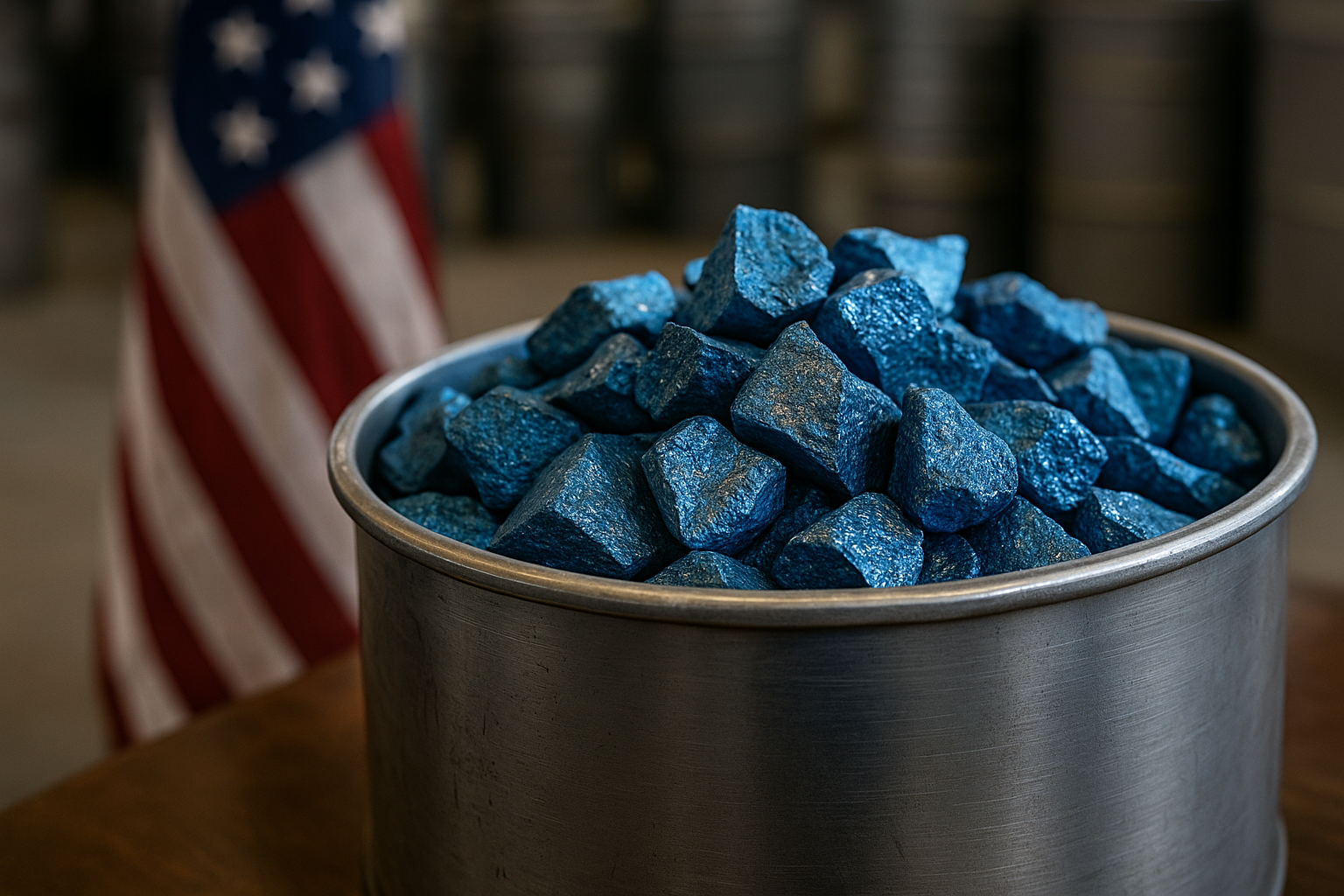The U.S. mining sector is staring at a transformational opportunity that could reshape its economic and geopolitical landscape. According to a groundbreaking study from the Colorado School of Mines, recovering just 1% of critical by-product minerals currently discarded during mining operations could dramatically reduce America’s reliance on foreign sources. At 90% recovery, domestic production could meet nearly all U.S. critical mineral needs.
In an era defined by geopolitical rivalries, trade restrictions, and soaring demand for energy-transition materials, this revelation has caught the attention of policymakers and investors alike. The study, highlighted by The Washington Post, underscores how overlooked mineral waste could become the linchpin of U.S. mineral independence—if the right policies and investments are put in place.
Why This Matters for Investors
The U.S. currently depends heavily on imports for key minerals essential to electric vehicles, batteries, semiconductors, and defense technologies. The U.S. Geological Survey (USGS) estimates that more than 75% of U.S. lithium, cobalt, and rare earth elements are imported, with significant volumes sourced from geopolitically sensitive regions like China and the Democratic Republic of Congo.
By-product recovery—extracting minerals from what is currently discarded waste rock and tailings—offers a pathway to unlock “hidden supply” within U.S. borders. Analysts at BloombergNEF note that secondary recovery technologies are not just environmentally aligned but also economically promising as global prices for lithium, nickel, and rare earths remain elevated.
For investors, this signals emerging opportunities in:
- Mining technology firms developing advanced recovery systems.
- Established miners pivoting to integrate by-product recovery into existing operations.
- Green infrastructure funds targeting critical minerals supply chains.
As Washington signals strong support for domestic mineral independence, capital could flow quickly into this subsector of mining.
Policy Momentum and Strategic Shifts
The Colorado School of Mines researchers are urging the launch of a national ore assessment program, coupled with tax credits and other incentives to spur investment in recovery methods. Such initiatives align with the Biden administration’s Inflation Reduction Act (IRA), which already provides billions in funding for domestic clean energy and mineral projects.
This isn’t just policy rhetoric. The Department of Energy (DOE) has recently expanded grants for critical mineral research, while the Department of Defense (DoD) has prioritized rare earth resilience under the Defense Production Act. If these recovery incentives are legislated, miners with U.S.-based assets could see a significant competitive advantage.
Industry watchers believe that tax credits for recovery technologies could mirror the effect solar subsidies had on renewable energy—catalyzing a decade of rapid adoption and investor returns.
Future Trends to Watch
- Technology Commercialization – Companies specializing in mineral separation, hydrometallurgy, and AI-powered ore assessment could gain traction as pilots move into commercial stages.
- Corporate Partnerships – Expect collaborations between major miners and tech firms to accelerate recovery efficiency, reducing costs and scaling adoption.
- Supply Chain Realignment – As domestic recovery ramps up, U.S. manufacturers in EVs, semiconductors, and defense may prefer domestic supply, insulating them from global disruptions.
- Global Implications – China’s dominance in rare earths could be challenged if the U.S. unlocks large-scale secondary recovery, potentially reshaping global pricing power.
Key Investment Insight
The study highlights that waste recovery is not just a scientific concept but an investable reality. Investors should monitor companies pioneering recovery technology, such as those working in advanced metallurgy and materials reprocessing. Equally, mining majors with significant U.S. operations could benefit from policy-driven incentives. Early positioning in these firms may offer strong upside as the U.S. shifts toward mineral independence.
America’s pursuit of critical mineral resilience could define the next era of mining investments. What was once discarded waste may soon become the cornerstone of domestic supply chains, powering everything from EV batteries to advanced defense systems.
Stay ahead of these developments with MoneyNews.Today, your trusted source for daily investor insights across markets, commodities, and policy.





